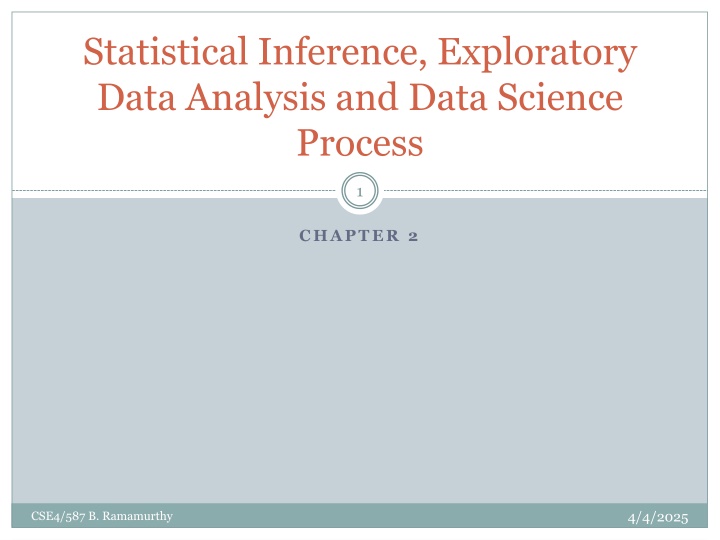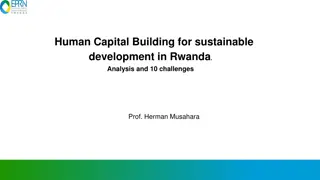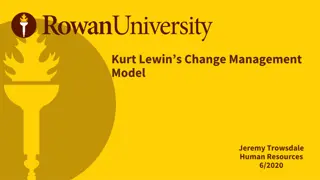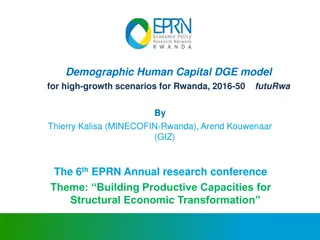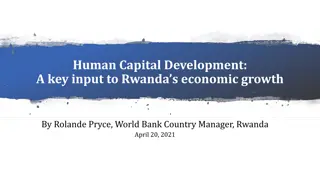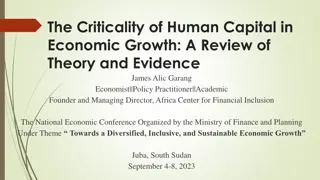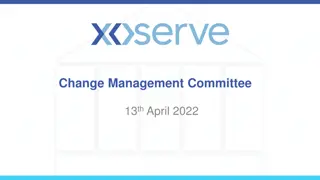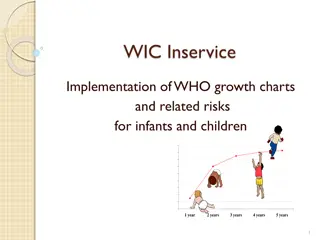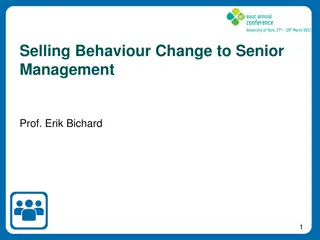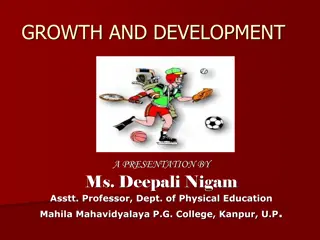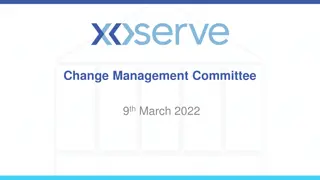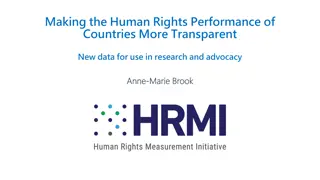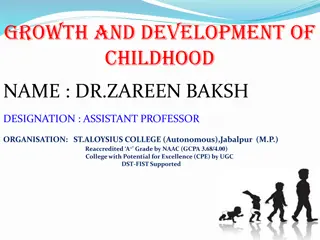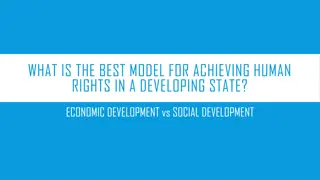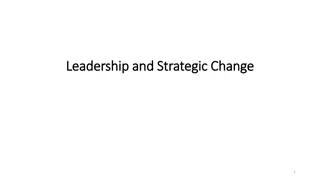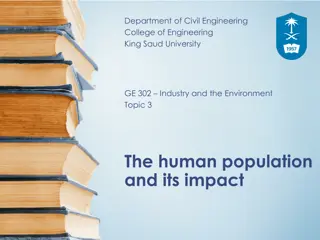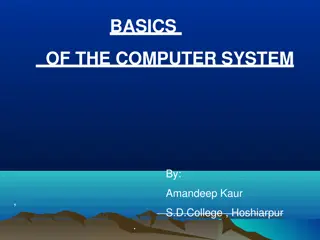Human Development: Understanding Growth and Change
Development encompasses the study of human growth across the lifespan, including physical, emotional, cognitive, and social aspects. From developmental psychology to physical and cognitive development, explore how individuals evolve over time. Discover the significance of studying development in psychology, sociology, education, and healthcare.
Download Presentation

Please find below an Image/Link to download the presentation.
The content on the website is provided AS IS for your information and personal use only. It may not be sold, licensed, or shared on other websites without obtaining consent from the author.If you encounter any issues during the download, it is possible that the publisher has removed the file from their server.
You are allowed to download the files provided on this website for personal or commercial use, subject to the condition that they are used lawfully. All files are the property of their respective owners.
The content on the website is provided AS IS for your information and personal use only. It may not be sold, licensed, or shared on other websites without obtaining consent from the author.
E N D
Presentation Transcript
Statistical Inference, Exploratory Data Analysis and Data Science Process 1 CHAPTER 2 4/4/2025 CSE4/587 B. Ramamurthy
Drew Conways Venn Diagram on DS (p.7) Math& Statistics Knowledge Traditional research ML DS Hacking Skills Substantive Expertise Danger zone 2 4/4/2025 CSE4/587 B. Ramamurthy
2014 West African Ebola outbreak: This is real data collected during Ebola crisis. We have # mentions in twitter and number of cases plotted against days. Data from Twitter and CDC.gov 3 4/4/2025 CSE4/587 B. Ramamurthy
Chapter 1 4 Lot of discussion of the authors context What is the skill set needed for a data-computer scientist? Read chapter 1: add coding to that. See code.org Preface page xix.: Pay attention to the extensive list of supplemental reading on various topics related to DS. Lets self-assess where each of us stand as individuals and as a class. 4/4/2025 CSE4/587 B. Ramamurthy
Chapter 1 and 2 Data Science 5 Read Chapter 1 to get a perspective on big data Chapter 2: Statistical thinking in the age of big data You build models to understand the data and extract meaning and information from the data: statistical inference 4/4/2025 CSE4/587 B. Ramamurthy
Introduction 6 Data represents the traces of the real-world processes. What traces we collect depends on the sampling methods You build models to understand the data and extract meaning and information from the data: statistical inference Two sources of randomness and uncertainty: The process that generates data is random The sampling process itself is random Your mind-set should be statistical thinking in the age of big-data Combine statistical approach with big-data Our goal for this chapter: understand the statistical process in dealing with data 4/4/2025 CSE4/587 B. Ramamurthy
Uncertainty and Randomness 7 A mathematical model for uncertainty and randomness is offered by probability theory. A world/process is defined by one or more variables. The model of the world is defined by a function: Model == f(w) or f(x,y,z) (A multivariate function) The function is unknown model is unclear, at least initially. Typically our task is to come up with the model, given the data. Uncertainty: is due to lack of knowledge: this week s weather prediction (e.g. 90% confident) Randomness: is due lack of predictability: 1-6 face of when rolling a die Both can be expressed by probability theory 4/4/2025 CSE4/587 B. Ramamurthy
Statistical Inference 8 World Collect Data Capture the understanding/meaning of data through models or functions statistical estimators for predicting things about world Development of procedures, methods, and theorems that allow us to extract meaning and information from data that has been generated by stochastic (random) processes 4/4/2025 CSE4/587 B. Ramamurthy
Population and Sample 9 Population is complete set of traces/data points US population 314 Million, world population is 7 billion for example All voters, all things Sample is a subset of the complete set (or population): how we select the sample introduces biases into the data See an example in http://www.sca.isr.umich.edu/ Here out of the 314 Million US population, 250000 households are form the sample (monthly) Population mathematical model sample (My) big-data approach for the world population: k-nary tree (MR) of 1 billion (of the order of 7 billion) : I basically forced the big-data solution/did not sample: This is possible in the age of big-data infrastructures 4/4/2025 CSE4/587 B. Ramamurthy
Population and Sample (contd.) 10 Example: Emails sent by people in the CSE dept. in a year. Method 1: 1/10 of all emails over the year randomly chosen Method 2: 1/10 of people randomly chosen; all their email over the year Both are reasonable sample selection method for analysis. However estimations pdfs (probability distribution functions) of the emails sent by a person for the two samples will be different. 4/4/2025 CSE4/587 B. Ramamurthy
Big Data vs statistical inference 11 Sample size N For statistical inference N < All For big data N == All For some atypical big data analysis N == 1 world model through the eyes of a prolific twitter user Followers of Ashton Kuchar 4/4/2025 CSE4/587 B. Ramamurthy
New Kinds of Data 12 Traditional: numerical, categorical, or binary Text: emails, tweets, NY times articles ( ch.4, 7) Records: user-level data, time-stamped event data, json formatted log files (ch.6,8) Geo-based location data (ch.2) Network data ( ch.10) (How do you sample and preserve network structure?) Sensor data ( covered in Lin and Dyer s) Images 4/4/2025 CSE4/587 B. Ramamurthy
Big-data context 13 Analysis for inference purposes you don t need all the data. At Google (at the originator big data algs.) people sample all the time. However if you want to render, you cannot sample. Some DNA-based search you cannot sample. Say we make some conclusions with samples from Twitter data we cannot extend it beyond the population that uses twitter. And this is what is happening now be aware of biases. Another example is of the tweets pre- and post- hurricane Sandy.. Yelp example.. 4/4/2025 CSE4/587 B. Ramamurthy
Modeling 14 Abstraction of a real world process Lets say we have a data set with two columns x and y and y is dependent on x, we could write is as: y = 1 + 2 ? (linear relationship) How to build a model? Probability distribution functions (pdfs) are building blocks of statistical models. Look at figure 2-1 for various prob. distributions 4/4/2025 CSE4/587 B. Ramamurthy
Probability Distributions 15 Normal, uniform, Cauchy, t-, F-, Chi-square, exponential, Weibull, lognormal,.. They are know as continuous density functions Any random variable x or y can be assumed to have probability distribution p(x), if it maps it to a positive real number. For a probability density function, if we integrate the function to find the area under the curve it is 1, allowing it to be interpreted as probability. Further, joint distributions, conditional distribution.. 4/4/2025 CSE4/587 B. Ramamurthy
Fitting a Model 16 Fitting a model means estimating the parameters of the model: what distribution, what are the values of min, max, mean, stddev, etc. Don t worry R has built-in optimization algorithms that readily offer all these functionalities It involves algorithms such as maximum likelihood estimation (MLE) and optimization methods Example: y = 1+ 2 ? y = 7.2 + 4.5*x 4/4/2025 CSE4/587 B. Ramamurthy
Exploratory Data Analysis (EDA) 17 Traditionally: histograms EDA is the prototype phase of ML and other sophisticated approaches; See Figure 2.2 Basic tools of EDA are plots, graphs, and summary stats. It is a method for systematically going through data, plotting distributions, plotting time series, looking at pairwise relationships using scatter plots, generating summary stats.eg. mean, min, max, upper, lower quartiles, identifying outliers. Gain intuition and understand data. EDA is done to understand Big data before using expensive bid data methodology. 4/4/2025 CSE4/587 B. Ramamurthy
The Data Science Process 18 Exploratory data analysis Raw data collected Data is processed Data is cleaned Machine learning algorithms; Statistical models Build data products Communication Visualization Report Findings Make decisions 4/4/2025 CSE4/587 B. Ramamurthy
Summary 19 An excellent tool supporting EDA is R We will go through the demo discussed in the text. Something to do this weekend: Read chapter 2 Work on the sample R code in the chapter though it is not in your domain Find some data sets from your work, import it to R, analyze and share the results with your team You collect or can collect a lot of data through existing channels you have. Can you re-purpose the data using modern approaches to gain insights into your business? We will now introduce Jupyter notebook environment that be used for understanding lab problems, designing and implementing solutions. 4/4/2025 CSE4/587 B. Ramamurthy
Data Collection in Automobiles 20 Large volumes of data is being collected the increasing number of sensors that are being added to modern automobiles. Traditionally this data is used for diagnostics purposes. How else can you use this data? How about predictive analytics? For example, predict the failure of a part based on the historical data and on- board data collected? On-board-diagnostics (OBDI) is a big thing in auto domain. How can we do this? 4/4/2025 CSE4/587 B. Ramamurthy
Oil Price Prediction 21 4/4/2025 CSE4/587 B. Ramamurthy
